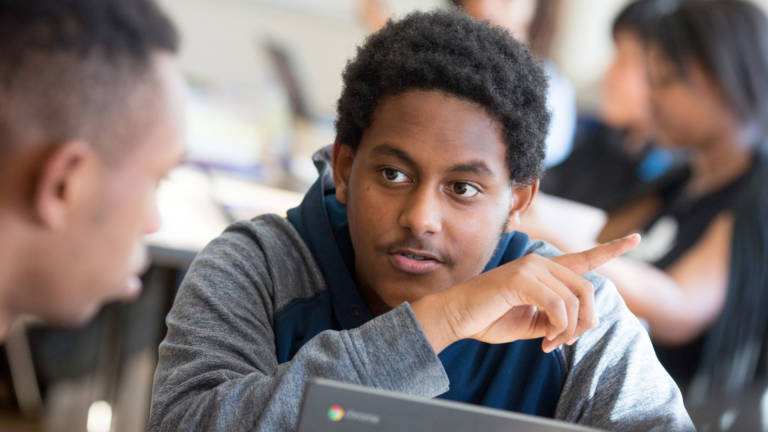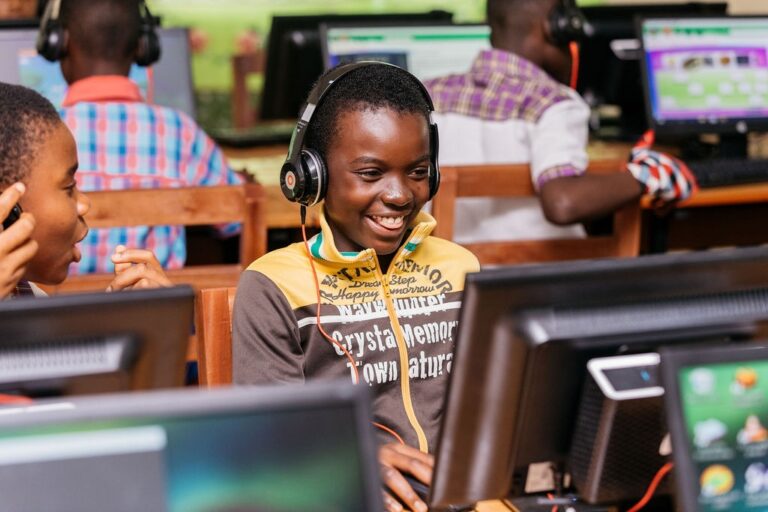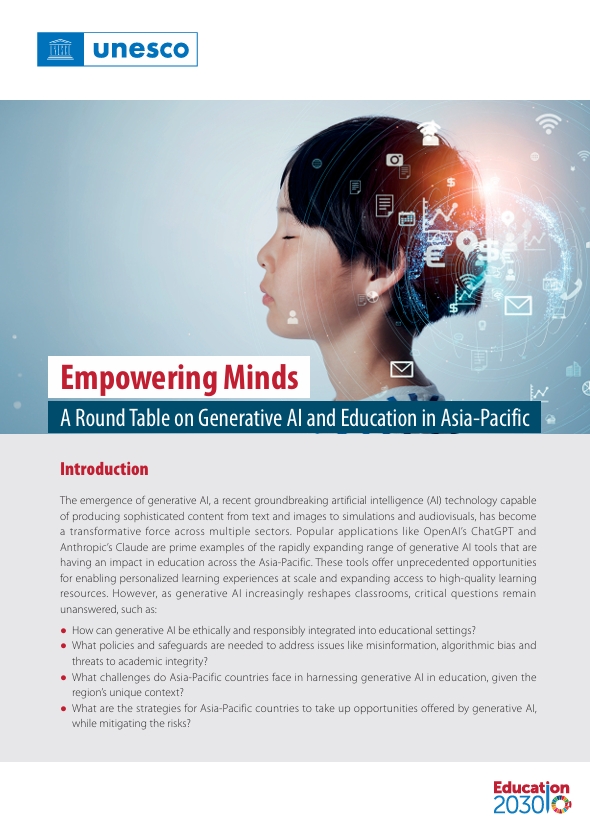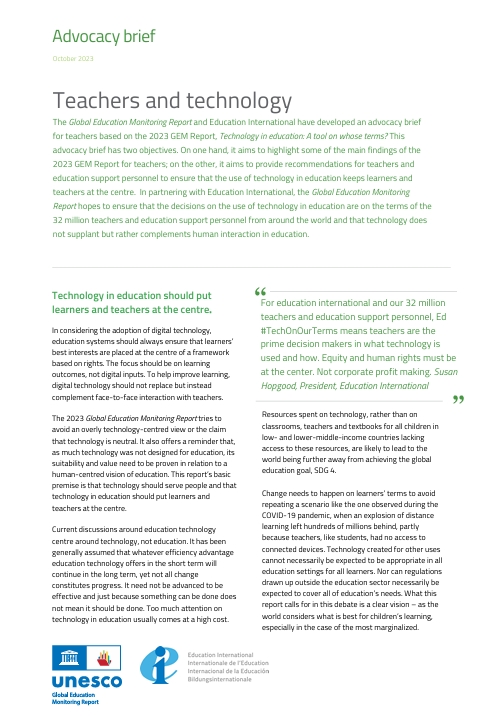By Katrina Schwartz | 29 January, 2018
The lack of clear evidence that adding technology to classrooms makes them more effective has dimmed some of the excitement around its potential to radically transform learning. Advocates for technology are quick to point out that implementation matters, and getting the most out of technology that allows students to create, collaborate and connect across space and time will require fundamental shifts in teaching. Skeptics, meanwhile, worry that precious education dollars are spent on expensive technology that strips the learning environment of important social dimensions, instead isolating students on screens.
There is truth in both sides of the argument. And lack of clarity about how to ensure technology lives up to its potential has led harried teachers to question whether it’s worth their time to change everything they do in the classroom.
Educators in Horry County, South Carolina have gone through this cycle of excitement about technology followed by a period of rethinking their strategy over the past few years. “We expected to see things dramatically move towards the use of technology in a very productive, constructive, critical way,” said Jeanie Dailey, a social studies learning specialist for the district. “And I don’t think that happened.”
Teachers found, as many others have, that at points devices were distractions to students, they had a tendency to make learning more individualistic, and that adults can’t assume because students have grown up with technology they automatically know how to use devices productively. “The piece that was making me so sad was that the kids weren’t being challenged to think collaboratively using these tools,” Dailey said.
But Dailey and a team of social studies teachers think they may have found a tool that gives them the flexibility to hold onto best practices they’ve long used, while leveraging computing power. Verso Learning is an Australian company that describes itself as a tool to help teachers take learning from the surface level to deep thinkingquickly. It’s basically an online communication platform, but Dailey and her team have found it has elevated the quality of thinking and discussion happening in middle school classrooms.
“I’ve never lost sight of the fact that true literacy is listening, speaking, reading and writing,” said Dailey, who has taught for 40 years. “It’s real simple, but we don’t do it. So I see this as an extension of the work I’ve done in my career. Verso excites me, quite frankly. It gets back to some of the basics, but it has a 21st century feel.”
Dailey has plenty of experience teaching these basic tenets of literacy without technology, but she has found elements of the virtual environment on Verso to be particularly powerful for highlighting unexpected pockets of brilliance in the room.
“One of the things that has been a guiding principle of my career is we don’t know the talents and strengths of the students in our room,” Dailey said. “We know the high flyers and we know the ones who don’t perform well.” Because students can interact anonymously on Verso’s platform, and they can’t see other students’ responses until they’ve shared one of their own, Dailey sees more participation and more interaction between students who may never work together otherwise.
Unlike many tools that intend to keep students within the program as much as possible, Verso is designed to meld face-to-face interaction with online collaboration. Verso CEO Phil Stubbs says often when teachers first experiment with Verso they make the mistake of using it as an online question asking tool. Stubbs likes to say, “We want to see kids not at their first thinking, but at their best thinking,” something he believes only happens when they’ve been exposed to the ideas of others.
For example, a typical activity middle school social studies teachers use starts with a provocative, open-ended question that drives at a hard-to-grasp or core concept in the curriculum. For seventh graders in Horry County studying global history, that prompt might be: What was the biggest cause of the French Revolution?
Students are given time to jot down their initial thoughts on paper and then they share their thinking in a small group. Only after they’ve had this initial opportunity to activate their thinking and interact with peers do students begin typing an answer into Verso – getting at what Stubbs would call their best thinking in that moment. Student responses to the question show up anonymously; after sharing their own response students are usually required to read and respond to several of their peers, also anonymously.
Then, teachers can easily group students based on their responses to the question. For example, they may put students who agree into a group and then ask them to discuss their thinking in face-to-face groups before collaboratively writing a statement that synthesizes the arguments each member made.
“If you can take kids to a synthesis level in one class, you’ve done a great job,” said Dailey, who is constantly pushing the teachers she coaches to remember that despite the massive amount of content social studies teachers have to cover in a year, none of it will make a lasting impact without deeper thinking.
“We run the danger of making it very low level questioning, very right/wrong answer questioning, multiple choice type responses and assessments,” Dailey said. “We run the risk in that kind of environment of forgetting what the big picture is — that we want to make all kids college and career ready.”
For Samantha House, a seventh grade social studies teacher at St. James Middle School (a public school in Horry County), structuring the lesson so there are multiple points of collaboration helps all learners feel comfortable participating. “By the time it’s no longer anonymous they’ve had a lot of opportunities to see correct answers,” House said. “So they’ve learned from their peers.” And, just as importantly in her mind, many of her shy students, as well as those who struggle, have seen their ideas validated by anonymous peer responses. That makes them feel more confident to speak up during small group or whole-class discussions.
Early on House and other teachers realized that students didn’t know how to give one another substantive feedback. When asked to comment on one another’s contributions in Verso students would write unhelpful things like, “I agree.” In response, teachers started giving them sentence starters to agree, disagree or extend another person’s idea. House says she’s seen an improvement in the academic vocabulary students use when responding to each other. And she’s beginning to see that online practice spill over into the conversations students have in-person too.
At first House worried that an anonymous online discussion forum like Verso would lead to inappropriate or bullying comments, but she’s been surprised that the only comments her students flag are ones that don’t appropriately use the sentence starters for good feedback.
When Jennifer Wilson first tried Verso with her seventh graders at Aynor Middle she hadn’t had any professional development. She used the tool as a space for students to make a claim about the book they were reading and back it up with evidence. That worked well, but she’s even more excited about the collaborative structures she has since learned through professional development. She says the Verso activities work best when she asks a meaty, open-ended question and pairs work in Verso with the Kagan cooperative structures teachers in this district have been using for some time.
For example Wilson asked students which founding document was most important to the country: the Declaration of Independence, the Constitution, or the Bill of Rights (students understood the Bill of Rights is part of the Constitution, but thought it should be considered on its own). To formulate answers students had to understand the differences in the documents and make evidence-based arguments. “Some of the things they said were very deep thinking — it was pretty awesome,” Wilson said.
Wilson said preparing Verso lessons takes time because she has to plan a pre-Verso activity to get students thinking on their own, come up with a rich provocation or question for the Verso, and then make sure students debrief afterwards. She uses Verso once every two weeks, but she thinks the practice there is spilling over into students’ writing and academic discourse.
Using Verso can be a bit more challenging when there’s a broad array of abilities in the classroom. “With high level honors students that works beautifully,” said Annette Nerone, a seventh grade social studies teacher at Myrtle Beach Middle School. “It’s not as simple with lower-level kids because now you’re introducing a lot of different processes in one lesson.” Nerone has more English language learners and kids with special needs in her classes and she finds they need more support with Verso activities because they require so much reading and writing.
“The higher level students can jump right in and they’ll basically do it on their own and the conversations are amazing. But with my lower level students, they need more support along the way,” Nerone said. She helps them by simplifying the instructions, offering sentence frames, and giving them lists of helpful vocabulary to include in their answers.
She also likes to start activities by having students work together so that the kids who understand more English can help their peers understand the question and documents. Despite the inherent challenges of working with students who are struggling with the language, Nerone says students are proud when they write a response in Verso and see it pop up in the class dialogue.
Nerone particularly likes using Verso in conjunction with the Kagan structures. She finds students enjoy the face-to-face interactions. “They’ll write interesting things to one another, but I think it’s kind of like human beings emailing back and forth. When you take the human side out of it you lose so much,” she said.
Verso CEO Phil Stubbs agrees that the collaboration piece is key to making Verso a deep learning experience. His team has baked collaborative structures into the premium version of the technology with features like lesson builders, recipe cards, the ability to connect with other teachers, and other professional development. “You can only move from best to better if you have collaborative structures,” Stubbs said.
Jeanie Dailey has appreciated Stubbs’ commitment to collaboration and the student experience. She knows his job is to sell a product, but she’s found him to be a helpful thought partner as she’s worked with classroom teachers on how to get the most out of the tool in Horry County.
“To me the exciting piece is if you can create a model that teachers can follow, step by step by step, you can change how they think about the construction of knowledge,” Dailey said. She believes the model they are following gets students to go from a surface knowledge of a subject to a deeper level of synthesis and reflection in one 60-minute class period. And some teachers even take it a step further, asking kids to think metacognitively about how the comments and suggestions of peers changed their thinking on a topic.
Dailey won’t have data until students take the standardized social studies exam in the spring, but she’s hoping all the writing they’ve done in Verso will boost their performance on the document-based questions. She says seeing improvement on test scores would be nice, but her real goals are bigger than that: “What I want to do as a social studies leader is help provide students with experiences that are enriching to them, that makes them better thinkers, deeper thinkers, more curious thinkers.”






